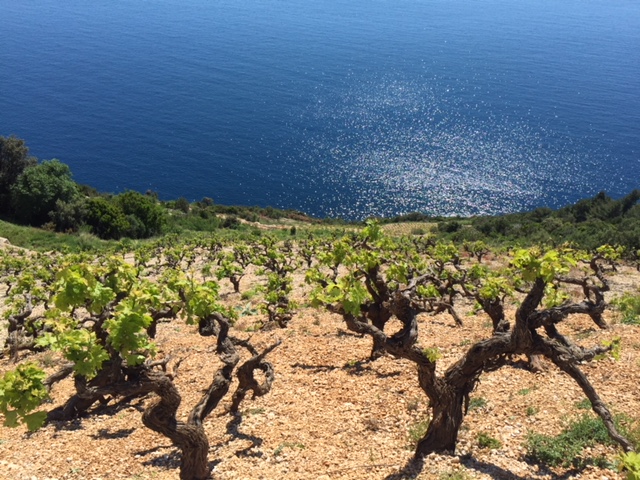What are the top Croatian grape varieties to taste? If you are craving new flavours or a different vinous experience, why not give Croatian wine a try? Croatia has more than 130 different native wine grapes. Combine the grape diversity with a multitude of microclimates, and the country is a treasure trove for wine lovers.
Here are six exciting Croatian grape varieties to help you get started with Croatian wine.
Graševina
Pronunciation: Grahsh-ah-vee-nah
The white Graševnia grape is considered native but it is not one of the exclusively Croatian grape varieties, shared across Central and Eastern Europe. It is known as Welschriesling in Austria, Olaszrizling in Hungary, and Laški Rizling in Slovenia. In Serbia, it has two names: Grašac and Italian Riesling. The grape accounts for almost a quarter of the plantings in Croatia; most of the Graševina grapes are vinified as inexpensive table wines to satisfy the domestic demand. However, Graševina isn’t just a one-dimensional workhorse; it can also produce mineral-driven, medium-bodied wines with crisp acidity. Besides still, dry wines, you can also find Graševina in sweet, sparkling, and macerated styles.
Malvazija Istarska
Pronunciation: Mal-vahz-ee-yah Ih-star-skah
As the flagship white grape of Istria, Malvazija Istarska is genetically different from the Malvasia sorts from Italy and Greece. Malvazija Istarska is a grape of many faces, and the Istrian producers are constantly creating new expressions from it. Some producers are aging this variety in acacia wood barrels and amphorae, while others are letting the grapes stay on the skins for a few days to a few months. As a macerated wine, Malvazija Istarska tends to express high-toned aromas and sweet, tannic finish. As a fresh white wine, it is characterized by floral aromas and white-fleshed fruit flavors, making it a cheerful tipple.
Pošip
Pronunciation: Poh-ship
Pošip is planted throughout the Dalmatia wine region but native to the Dalmatian island of Korčula. It is believed that Korčula remains as the best site for growing Pošip, and many Dalmatian producers outside the island buy grapes from there to vinify in their wineries.
Pošip wines range from medium to full body, supported by refreshing acidity and high alcohol. It is common to find Pošip wines with 14% ABV. But fret not, the alcohol is well filled up by ripe and sweet fruit flavors. What’s fun about this grape is that it is extremely adaptable yet honest to its birthplace. As such, you can find Pošip wines made by numerous producers, and all the wines can taste significantly different from each other. So wine geeks, it is important to ask where the grapes of your Pošip wine are from. A high-quality Pošip is fruity, herbal, and minerally, making it a perfect companion for the Dalmatian sun and cuisine.
Plavac Mali
Pronunciation: Plah-vahts Mah-lee
The flagship red grape of Dalmatia, Plavac Mali means “little blue”. It is the offspring of two native grapes, Dobričić and Tribidrag – the latter is also known as the original Zinfandel. It is found exclusively in Dalmatia, most notably in the Pelješac peninsula and the islands of Brač, Hvar, Korčula, and Vis.
The medium- to full- bodied Plavac Mali wines are widely available in nearly every restaurant on the coast. But be warned: the examples run from sloppy and homemade, to traditional and delicious, and modern with perfumed aromas. People who like Plavac Mali wine appreciate the ripe – sometimes to the point of raisined or jammy – fruit flavors and the tannic structure. Others who don’t like it usually struggle with its high alcohol and grippy tannins. Capable of long-term aging, the best examples of Plavac Mali express complexity with layered notes of red and dark berries, Mediterranean herbs, earth, and rose.
Babić
Pronunciation: Bah-bich
A cousin of Plavac Mali, Babić grows on the central and northern Dalmatian Coast. Officially, Babić accounts for about 1% of the plantings in Croatia. The best site for Babić is the UNESCO-shortlisted Bucavac vineyard, near the city of Primošten. The grape has shown tremendous potential and is described as being similar to Plavac Mali but with more acidity and more approachable tannins. A good example of Babić is medium-bodied with flavors of cherry, savory spices, dried green herbs and earth.
Teran
Pronunciation: Teh-rahn
A member of the Refosco family and considered native to a few countries, it is a red grape widely planted in Istria. Teran can be found as a varietal wine or a blend with Cabernet Sauvignon, Merlot, or Syrah in the mix.
Teran wines are medium-bodied, dark in color, with a savory overtone and wild berries flavors. The acidity is usually elevated but when put to good use, Teran wines can show food-friendly qualities and excellent aging potential.

Written by Croatian wine specialists Matthew Horkey and Charine Tan
 Want to learn more about Croatian grape varieties?
Want to learn more about Croatian grape varieties?
Check out Charine and Matthew’s book on Croatian wine: ‘Cracking Croatian wine: A visitor-friendly guide’
Discover more about Matthew and Charine’s own adventure around the wine world at their website Exotic Wine Travel.
Other articles on Croatia:
- Stari Grad & Hvar wine guide
- Guide to Istria’s wines (and food!)
- A wine lover’s guide to visiting Croatia
- The flavours of Pag island
- 101 on Istrian climate
- Tomic winery and native Hvar varieties
- Importing Croatian wine into the UK
- Istrian terroir with Bruno Trapan
- All Croatian articles

